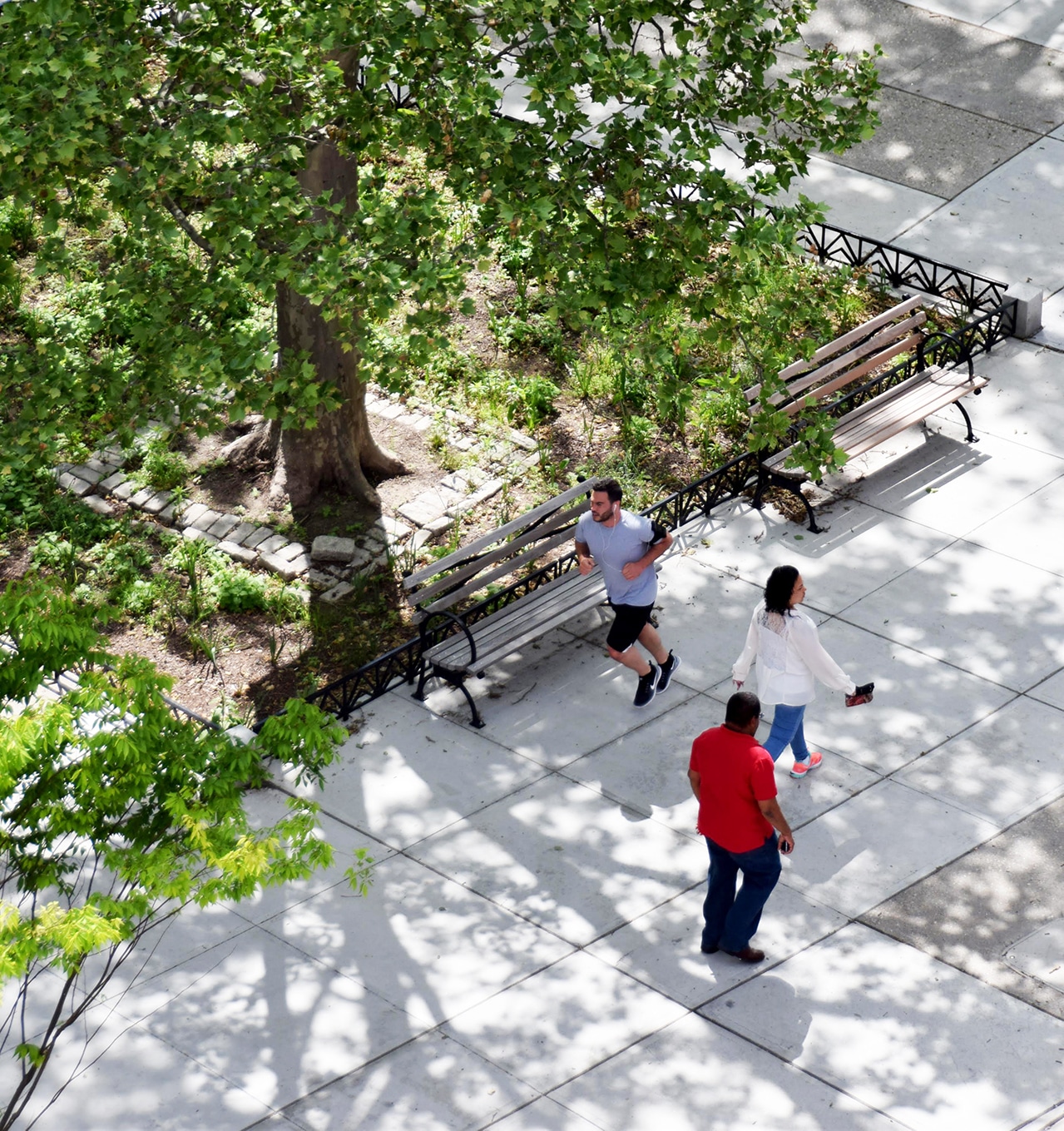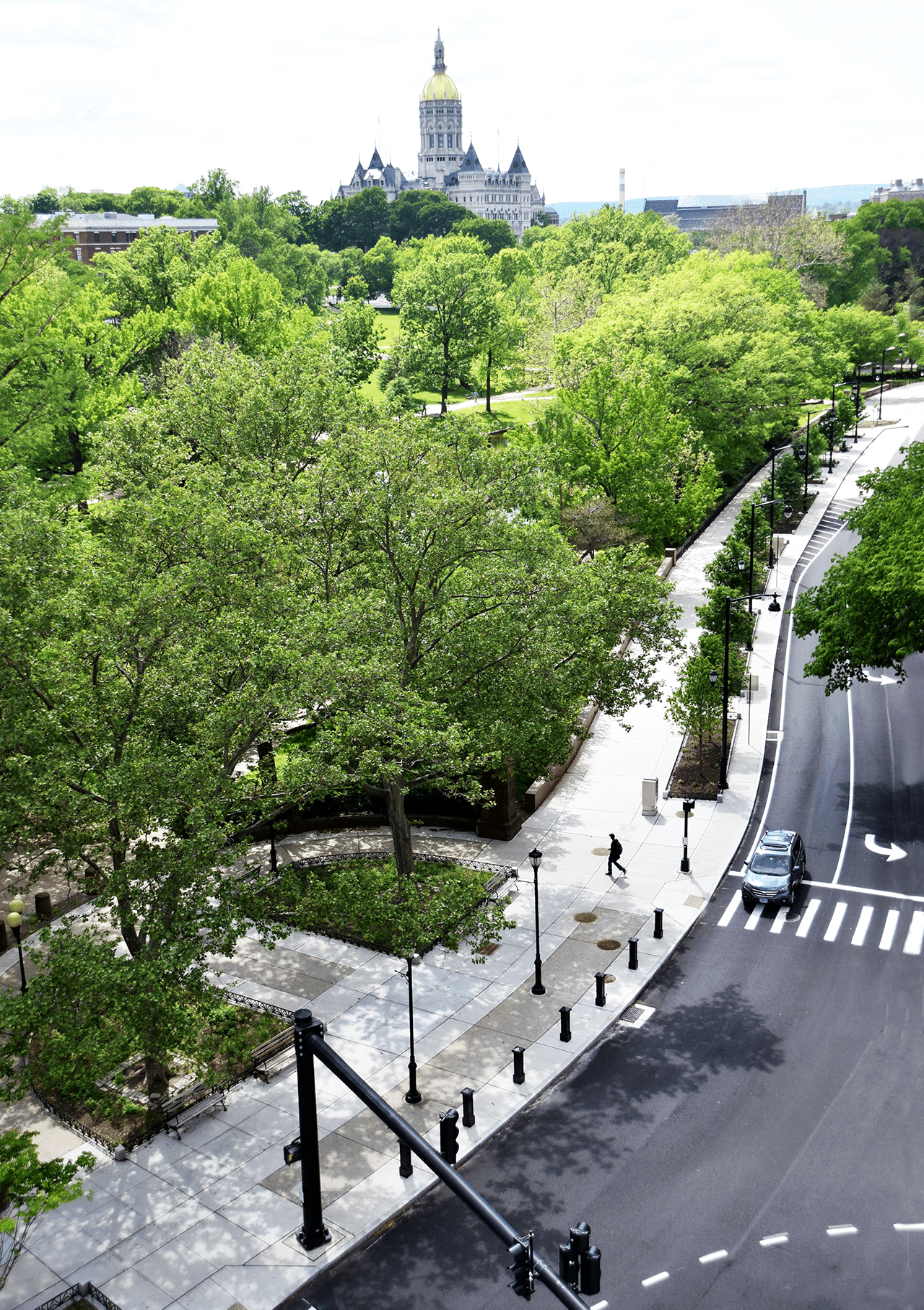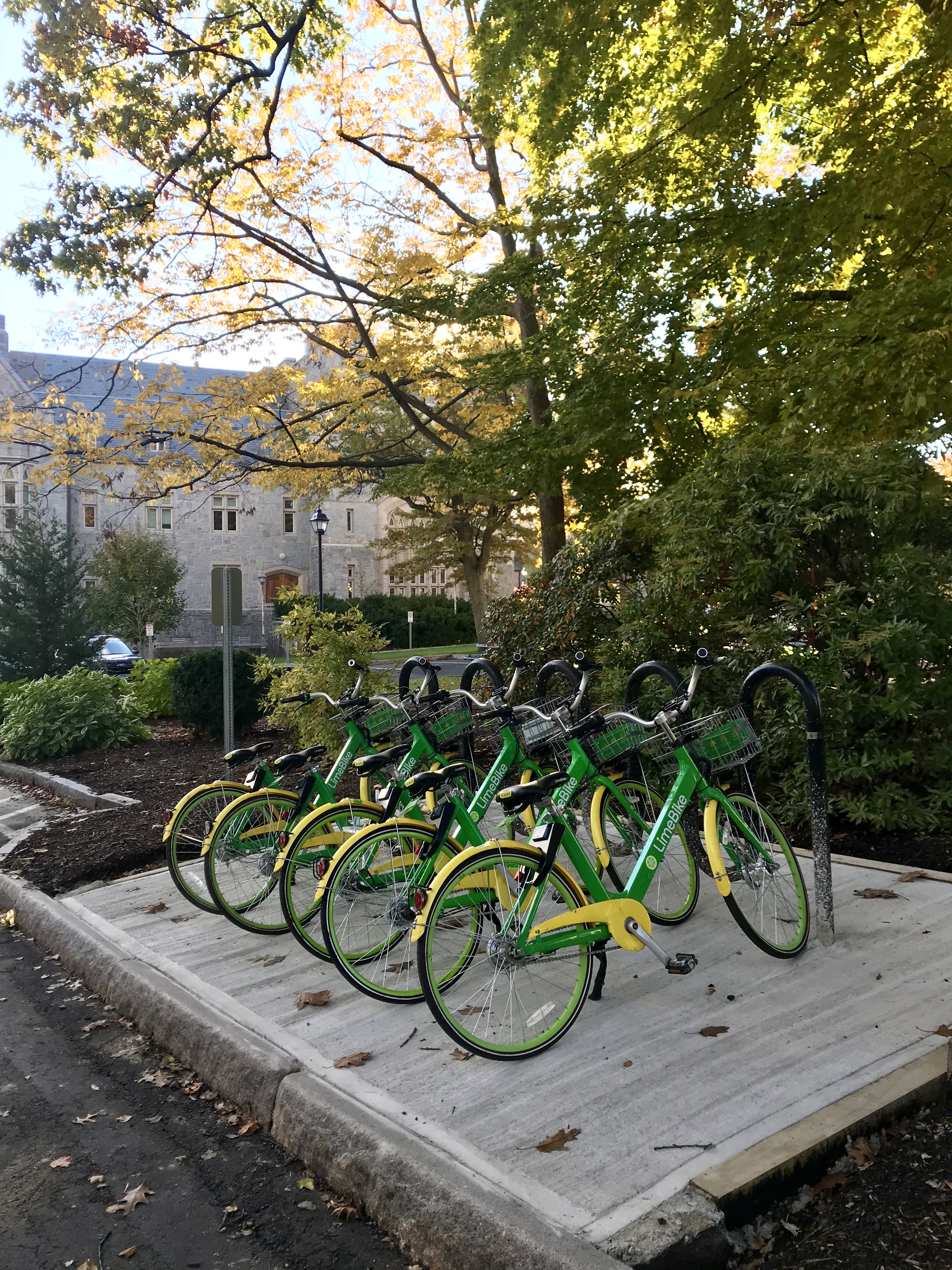The Connecticut capital is changing the way it thinks about zoning and building.

Hartford makes strides to pedestrian-friendliness. [Photo: Courtesy of Suisman Urban Design]
Lynn Stoddard visits Hartford, Connecticut regularly for meetings related to her position as the director of the Institute for Sustainable Energy at Eastern Connecticut State University. Hartford has always been a charming city, with historic architecture and a bustling business district. But in the last two years, Stoddard began to notice a change. “There are bike-share bikes on the sidewalk. There are these great, new public spaces that have been beautified and improved,” she says. “Even on the surface you can see that the city has been making a real push to improve sustainability.”
Peek under the surface, and there’s even more to see. In 2016, Hartford stakeholders—including nonprofit organizations, regional and state government agencies, and private businesses—convened to draft a Climate Action Plan for the city. The plan was formally adopted by the City Council in 2017. That same year, Hartford Mayor Luke Bronin created an Office of Sustainability, using funding from external grants to implement the plan.

The Horace Bushnell Promenade is a 30-foot wide public space that runs adjacent to the Bushnell park, effectively extending the park for a half-mile stretch. [Photo: Courtesy of Suisman Urban Design]
How to Build a Sustainable Community
Much of this work has been guided by Sustainable CT, which was founded in 2016 to provide a road map to sustainability for Connecticut communities and is run out of Stoddard’s office at Eastern Connecticut State. Sustainable CT shares best practices with communities working to develop sustainability plans, has a certification program for those that meet certain benchmarks, and routes grant funding into local projects. Hartford was granted certification by Sustainable CT in October 2018. “The local level is a great place to work on sustainability,” Stoddard says. “It’s not partisan. And in your home, in your community, that’s really where behavior is influenced. If a person sees solar panels on the roof of every school in town, mounted above many parking lots, and on the homes of several of their neighbors, that person is probably more likely to consider solar panels for themselves.”
In 2016, Hartford’s zoning code underwent a major overhaul for the first time in 50 years. The new, forward-thinking zoning code is an exceptionally impactful—if distinctly unsexy—move toward a more sustainable community. The code eliminated parking minimums in Hartford, meaning builders no longer have to provide parking as part of new construction. That allows for greater building density in the city and encourages walking, biking, and public transit use. The code also allows building-mounted solar panels and wind turbines just about everywhere, plus large-scale wind turbines along the highway corridor and solar-power canopies in many places. It requires electric vehicle charging stations in parking lots for more than 35 cars as part of an effort to establish a citywide infrastructure supporting electric vehicles. It requires most buildings to have bike parking. And it dictates a 25- to 50-foot buffer near waterways where development is prohibited. That’s just to name a few of the changes.

[Photo: Courtesy of Suisman Urban Design]
The zoning code overhaul is being augmented by several green infrastructure projects around town. A $5 million grant from the Connecticut Department of Energy and Environmental Protection is allowing the city to retrofit all of the city’s streetlights. Eventually all of the city’s streets and public spaces will be lit by LED lights. “We anticipate not just environmental benefits and cost savings but also brighter streets, which is a critical safety issue,” says Shubhada Kambli, sustainability coordinator for Hartford. The State Capitol is undergoing a retrofit that includes installing rain gardens and pavement that allows rainwater to flow into the ground, and installing a water cistern to collect rainwater for irrigation. The Horace Bushnell Promenade is a 30-foot wide public space that runs adjacent to the Bushnell park, effectively extending the park for a half-mile stretch. The promenade features planters that work as rain gardens, energy-efficient lighting, and new benches and bike racks.
Overall, Kambli says Hartford’s Climate Action Plan approaches sustainability as a quality-of-life issue. “We want to see clean jobs, we want to see cleaner air, soil, and water for our residents,” Kambli says. “Our environmental work is not just for the sake of reducing greenhouse gas emissions. It really is designed to create direct benefits for our residents.”

